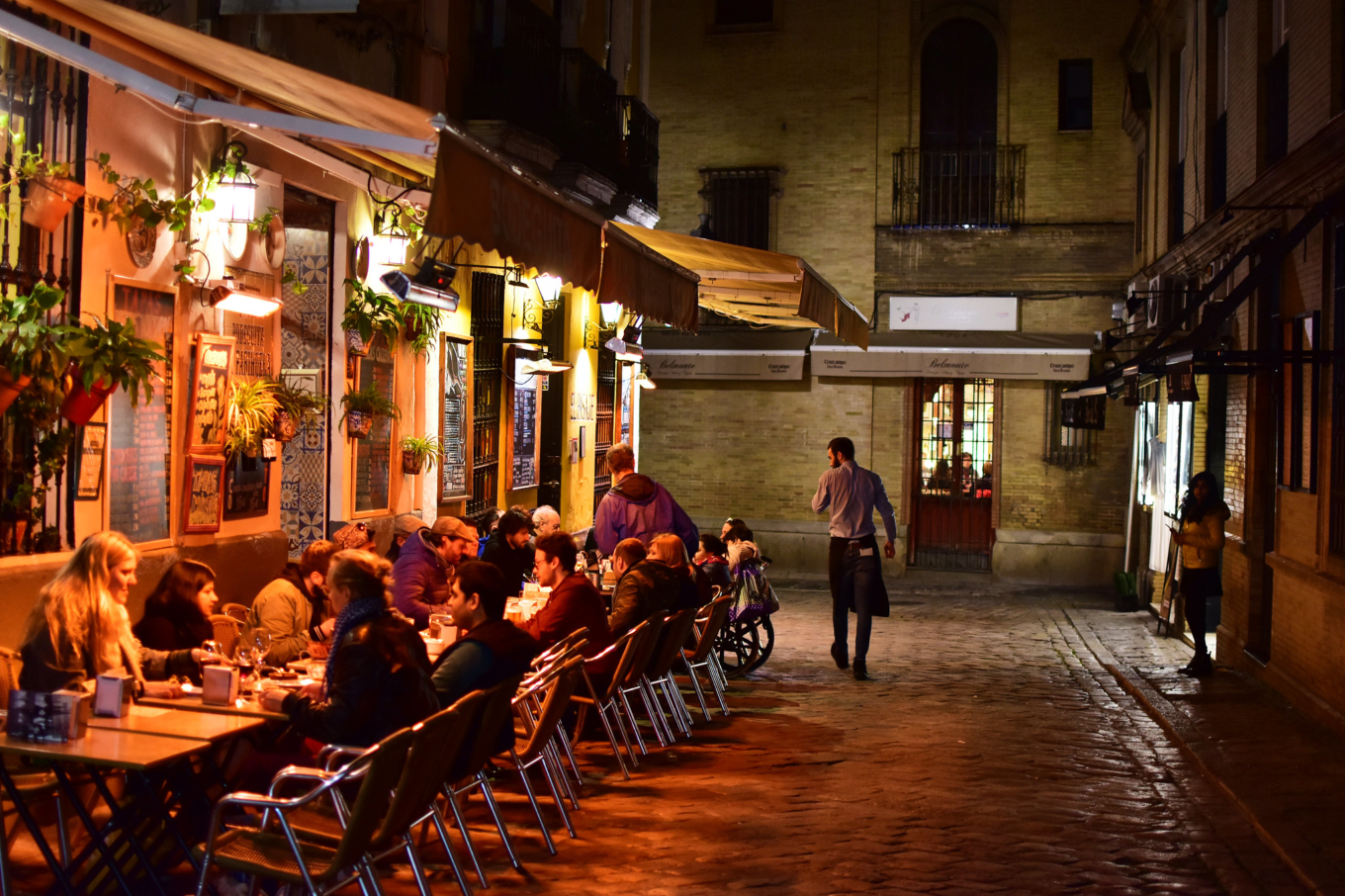One of Europe’s most dynamic cities, Seville is flush with style and brío. The stories of Figaro and Carmen, Don Juan and Fidelio set the stage, while gypsies, flamenco dancers and bullfights provide the action, along with much of the city’s soul. In many ways, Seville is Spain — or, at least, it’s the Spain we dream of home, as many of the flourishes we identify with the country originated here, or in the Andalucía region.
As one of Andalucía’s historic capitals, Seville’s influences meld Muslim, Jewish, and Christian traditions, but it’s the Moorish elements that dominate architecture of the historic center that surrounds the Barrio de Santa Cruz, a medieval neighborhood stocked with restaurants and bars. The labyrinth of narrow, windy streets was the city’s Jewish quarter until the end of the 15th century and today thrives as an irresistible lure for visitors, replete with ceramic-tiled benches and the scent of orange trees.

They come to ogle a trio of UNESCO World Heritage-listed buildings. The Alcázar of Seville, the royal palace, offers a chorus of Moorish notes, though 500 years of expansion and renovation has left it flush with an array of architectural styles. Nearby is the Seville Cathedral, the world’s largest Gothic building, and home to the tomb of Christopher Columbus, carried by four enormous stone knights. The eye-popping cathedral began as a mosque, dedicated in 1182, but following the city’s conquest by Ferdinand III in 1248, it was Christianized. The adjoining bell tower, La Giralda, was originally built as a minaret for the mosque — Renaissance-style flourishes were added by the Catholics.
But Seville’s visitors also come for the city’s unhurried pace, roaming pedestrianized streets in search of gold-domed palaces and the click and swoosh of flamenco dancers, and the best evenings involve a tapeo, the delicious bar crawl that leads along narrow alleys from gazpacho to jamón (ham) to pescado frito (fried fish).

Seville is closer to Africa than it is to Spain’s capital, Madrid — it’s barely 110 miles, as the crow flies, from Seville to Tangiers, Morocco. So it should come as no surprise that North African imports accent the Andalucían menu.
Chef Julio Fernández, co-owner of the Michelin-starred Seville restaurant Abantal, says five ingredients can be credited to Africa.
“Citrus, like orange, lemon and grapefruit, is used in our desserts,” explains Fernández, who adds that honeydew melon, which originated in Algeria, is another fruit common to Andalucía. “Aubergine, or eggplant, has a lot of importance, and many of our recipes, like pisto, use it.” Cane sugar and long-grain rice also came from Africa, both of which are prominent in many Andalucían recipes.
In towns throughout the region, markets brim with these fresh ingredients, and seafood — especially tuna, prawns and clams — also weaves through the menu, even in Seville, which lies 40 miles inland from the Atlantic.

One of Andalucía’s most heralded offerings is jamón. This is not just cured ham — it’s a delicacy, and ubiquitous. In Seville markets, glistening slivers of the marbled meat are served to go in paper cones or on crusty bread. Most prized is jamón Ibérico, the black Ibérian pig that is raised on a diet of acorns, berries and herbs — perfect when served with a glass of elegant, very old rare sherry, another export of Andalucía.
Coursing through the Andalucían kitchen is olive oil. Spain produces about half of the world’s supply of olive oil, and Andalucía is the country’s largest producer.

“It’s our essential ingredient,” says Fernández. Butter is never used in cooking, the chef explains. “There are almost no cows in Andalucía, so although we have cheese, we are not known for it.”
One of the most famous dishes associated with Andalucía is gazpacho, the cold tomato soup finished with olive oil. Gazpacho is a perfect antidote to the long, hot summers of Seville, and usually incorporates cucumbers, stale bread, onions, garlic and vinegar in a vibrant, refreshing blend, often served in a glass. Another robust vegetarian recipe from Seville is espinacas con garbanzos — spinach with chickpeas. Commonly served during Lent, the dish features a healthy dose of pimentón de la Vera (smoked paprika). The spice was brought from Mexico to Spain in the 16th century, eventually making its way to central and eastern Europe.
Paprika is the one spice used in pringá, a mouth-watering staple Fernández calls “one of the most civilian tapas in Seville,” traditionally eaten with family around a shared table. The recipe is simple — chicken, pork and chorizo sausage stewed slowly, then pan-fried. “Usually a broth is served first, with chickpeas, and then the pringá is eaten with a little bread, to make something like a sandwich,” adds Fernández.

While variations of lamb stew can be found all over Spain especially in neighboring Extremadura, look for caldereta de cordero in the mountain villages of Andalucía. It’s a slow-braised casserole plumped with potatoes, spiced (again) with pimentón.
Although Seville and Andalucía bake during the summer months, a hearty lamb stew is perfect on the cooler winter nights in the snow-covered mountains of the Sierra Nevada near Granada.
David Swanson’s writing and photography has been featured in the pages of National Geographic Traveler, American Way, and the Los Angeles Times for more than 20 years. He served as President of the Society of American Travel Writers in 2018-19.



